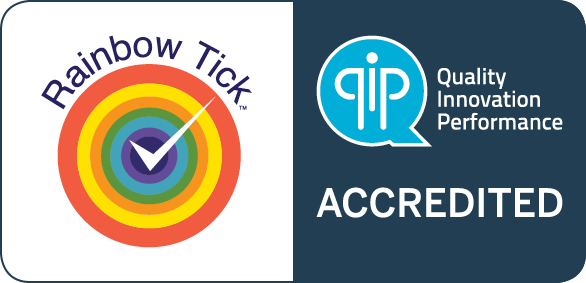1 September 2025
At a glance:
- The UK is expanding the ground-breaking Drive Project across England and Wales with AUD $168 million investment.
- The expansion is driven by the Drive Project’s enormous success in:
- Substantially reducing abuse: The number of Drive service users engaging in each type of domestic violence and abuse (DVA) behaviour reduced substantially:
- physical abuse reduced by 82%
- sexual abuse reduced by 88%
- harassment and stalking behaviours reduced by 75%
- jealous and controlling behaviours reduced by 73%.
- Significantly reducing risk: For the duration of the intervention, independent domestic violence advocates reported the risk to the victim reduced either moderately or significantly in 82% of cases.
- Reducing high-risk perpetration: Repeat and serial perpetrator cases heard at Multi-Agency Risk Assessment Conference ( MARAC)—multi-disciplinary panels that coordinate responses to high-risk domestic abuse cases—showed that Drive helped to reduce high-risk perpetration, including by serial and repeat perpetrators. Drive repeat and serial cases appeared less often at MARAC than in the control group; the difference was statistically significant and was sustained for a year after the case was closed.
- Substantially reducing abuse: The number of Drive service users engaging in each type of domestic violence and abuse (DVA) behaviour reduced substantially:
- Offers blueprint as Australia explores new high-harm initiatives.
The UK Government’s recent announcement of AUD $168 million to expand the Drive Project across England and Wales offers critical lessons for Australia: prioritising interventions that target those perpetrating domestic and family violence is essential for ensuring the safety of victim-survivors, as is making the best use of resources across the response system. This substantial funding reflects growing recognition that community-led interventions, backed by sustained measurable outcomes, represent one of the most effective approaches to reducing domestic and family violence.
Commenting on the Drive Project, No to Violence CEO Phillip Ripper said it’s crucial that Australia learns from international innovation and evidence-based approaches like this—the results of the Drive Project are compelling.
According to Mr Ripper, the timing could not be more critical for Australia, “The Attorney-General’s Department is currently conducting stakeholder consultations to design pilot programs for focused deterrence and Domestic Violence Threat Assessment Centres—targeting the same high-risk perpetrator population Drive has worked with for a decade.
The Drive Project demonstrates a key lesson for Australia: community-based approaches that work with people who use violence alongside victim support services achieve better, more sustained results than criminal justice-led responses alone,” Mr Ripper added.
After ten years of evidence-based practice, the Drive Project has demonstrated significant improvements in victim-survivor safety, with sustained reductions in violence, harassment and controlling behaviours by high-harm perpetrators (who are mostly men) (Hester, 2025).
Crucially, these safety improvements have been maintained more than 15 months after intervention, suggesting the program’s community-based approach increases the safety of adult and child victim-survivors of domestic and family violence, and helps prevent future victims by focusing intervention efforts on individuals who use violence, using a multi-agency approach to disrupt and stop abuse, and always providing dedicated support for victim-survivors and families.
For Australia, currently designing new initiatives targeting high-harm users of violence, the UK experience offers both a blueprint and a warning.
The program that works without consent
“These are the really harmful perpetrators who are quite ‘allergic’ to services and difficult to grab hold of,” says Professor Marianne Hester from the University of Bristol, who has led the comprehensive evaluation of the Drive Project over its decade-long implementation. Speaking to No to Violence Research Lead Dr Lisa Wheildon in a June interview, just weeks before the UK government’s major funding announcement, Professor Hester’s research has been instrumental in demonstrating the program’s effectiveness.
What makes Drive effective? The comprehensive multi-agency response that Professor Hester’s evaluation has validated through rigorous data collection.
The program creates a comprehensive network of local agencies that monitors and responds to men using violence through dedicated case managers coordinating police, probation, housing, mental health services and victim support. When community organisations or victims identify escalating risks, the case manager immediately activates appropriate responses—from police intervention to emergency housing support.
This creates what Professor Hester calls “a line from support through to disruption,” operating proactively around the perpetrator, whether or not he engages directly with services.
“The coordinated community response approach is absolutely key,” Professor Hester emphasises. “It’s the multi-agency system that matters—unless you’ve got everything in place, it’s not going to work.” At the heart of this system is the Drive Project case manager, who ensures victims have access to a multi-agency community context that can respond immediately and comprehensively.
The Australian comparison
Increasing political and policy momentum recognises the critical need to work with men who use violence as part of comprehensive domestic and family violence prevention. A significant next step federally involves the Attorney-General’s Department’s development of two pilot models: focused deterrence and Domestic Violence Threat Assessment Centres, designed to better identify and manage first-time, escalating, serial, fixated and high-risk family and domestic violence perpetrators. As these federal approaches develop through current stakeholder consultations, they must consider evidence-based models, such as Drive, that demonstrate how community-centred interventions can achieve sustained outcomes for victim-survivors while effectively keeping sight of perpetrators.
Two core distinctions Australia can learn from are:
Community response vs. criminal justice focus: Drive’s success stems from its community-centred approach, which works alongside and draws from justice systems when needed, rather than leading with formal processes and deterrence. In contrast, Australia’s primary response to people using violence relies heavily on criminal justice systems.
Integrated vs. siloed victim support: Drive demonstrates a model that integrates case management for individuals who use violence directly with victim support services, often operating under the same roof. If Australia creates separate pathways for high-risk cases, we lose what makes Drive effective: a coordinated network of community services that keeps people using violence in sight while supporting victims—both essential for sustained safety outcomes.
This matters because Australia already has promising community-based programs, such as Changing Ways, that share Drive’s community-led, relationship-based philosophy. The risk is creating competing rather than complementary systems, particularly given that emerging Australian approaches, such as the proposed Domestic Violence Threat Assessment Centres, emphasise formal criminal justice mechanisms rather than community-based interventions (Cubitt et al., 2024).
Results that speak volumes
Drive’s evaluation data is compelling: 82% reduction in physical violence, 75% in harassment and stalking behaviours, 73% in jealousy and controlling behaviours, and 88% reduction in sexual abuse, with a reduction in perpetration sustained at least 15 months after high-risk, high-harm men had completed the program.
Men with multiple victims—those at the highest risk of committing homicide—showed particularly strong improvements. Critically, many men never directly engage with services, yet violence reduction still occurs through coordinated community monitoring by Drive. For practitioners, this means that the coordinated approach is effective even with perpetrators who refuse to engage directly with services—a common challenge in the field.
Professor Hester’s research shows victims felt significantly safer knowing someone was monitoring their abuser with the capacity for immediate response—going beyond what individual Family Safety work can provide through comprehensive community-wide accountability.
The integration breakthrough
Drive has evolved to position case managers alongside victim services, breaking down traditional silos. “Initially, the victim services and the Drive case manager were in separate places, and they then realised actually having their offices in the same places was really useful and provided a more immediate response,” Professor Hester explains.
This co-location enables close coordination to maintain safety—victims appreciate knowing that if support staff are unavailable, they can access information through case managers.
The funding lesson
The AUD $168 million Drive investment has raised concerns from victim-survivor services when compared to the UK government’s concurrent commitments: just AUD $12.4 million for domestic abuse helplines and AUD $41.4 million for broader services addressing violence against women and girls.
While the substantial Drive funding demonstrates serious commitment to tackling high-harm perpetrators, this funding disparity underscores a critical message that organisations including Welsh Women’s Aid and Southall Black Sisters continue to emphasise: victim support services and perpetrator programs aren’t competing priorities—they’re complementary necessities that must both be adequately funded.
In Drive itself, victim support services aren’t an add-on—they’re a crucial component of what makes the approach work. The program’s success depends on this integration, not on choosing between supporting victims or working with perpetrators.
Blunt advice for Australian policymakers
Professor Hester’s message to Australian policymakers is blunt: “Don’t stop doing the other stuff and placing all your resources suddenly into work with high-harm perpetrators. You know, if you then take your eye off the moderate and the lower risk perpetrators, you’re providing a pipeline for these other ones—that’s not a good idea.”
This guidance is particularly relevant as political and policy decision-makers across the continent consider new initiatives to address men’s use of violence. While the UK’s substantial investment in the Drive Project demonstrates commitment to tackling high-harm perpetrators, Professor Hester’s emphasis on maintaining “all of it” aligns with sector calls for robust funding of both victim support services and diverse perpetrator interventions. The goal is not to choose between these approaches, but to ensure that both are adequately resourced to work together effectively.
The Australian opportunity
Australia stands at a critical juncture. With federal, state and territory initiatives in development, and programs like Changing Ways gaining traction, there is potential to create a comprehensive system that addresses all perpetrator risk levels while supporting all victims.
The Drive Project demonstrates coordinated community responses can disrupt, challenge and change the behaviours even of those who are causing the greatest harm and prioritise victim safety—but only when embedded within appropriately-resourced, integrated system working across the full spectrum of domestic and family violence interventions.
The UK’s decade-long investment offers a roadmap. The question for Australia is whether we will build complementary systems or competing ones.
Professor Hester advocates for a whole-system approach that recognises different groups of the (mainly) men who use domestic violence require different interventions. “Think of it all as a coordinated community response, but the message is that different perpetrators just need a different approach,” she explains.
Watch the complete interview with Professor Marianne Hester by No to Violence Research Lead Dr Lisa Wheildon: https://www.youtube.com/watch?v=LggjkItyay4








